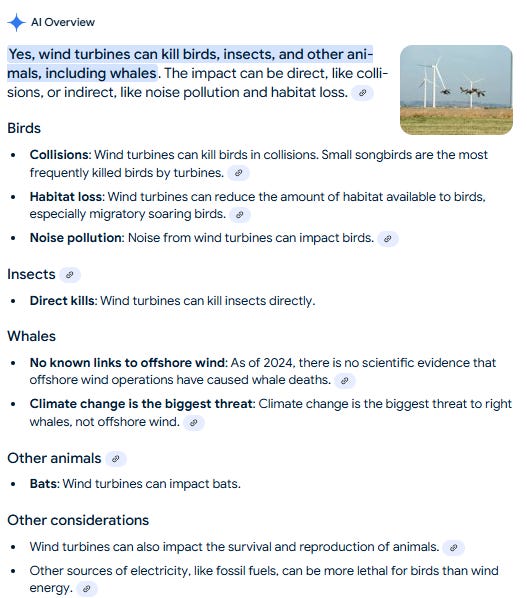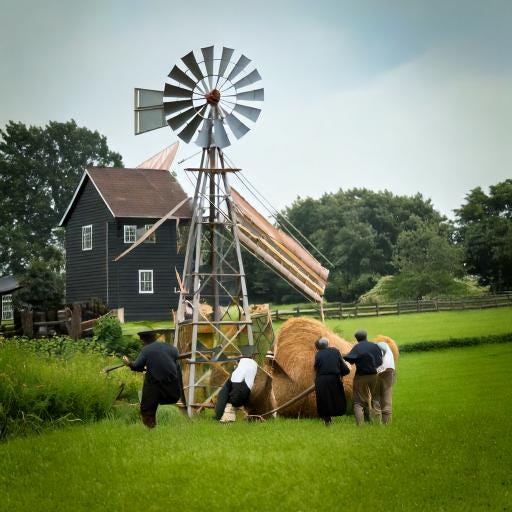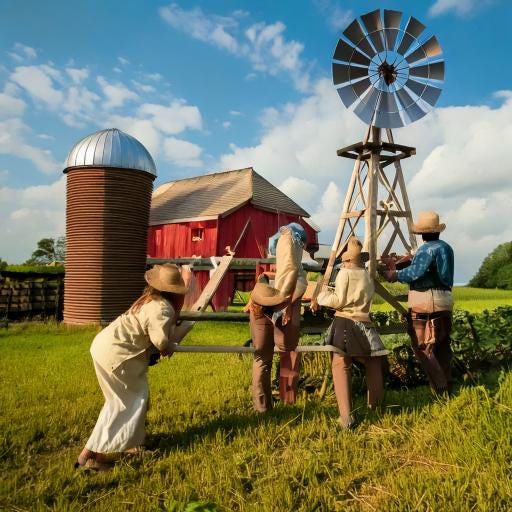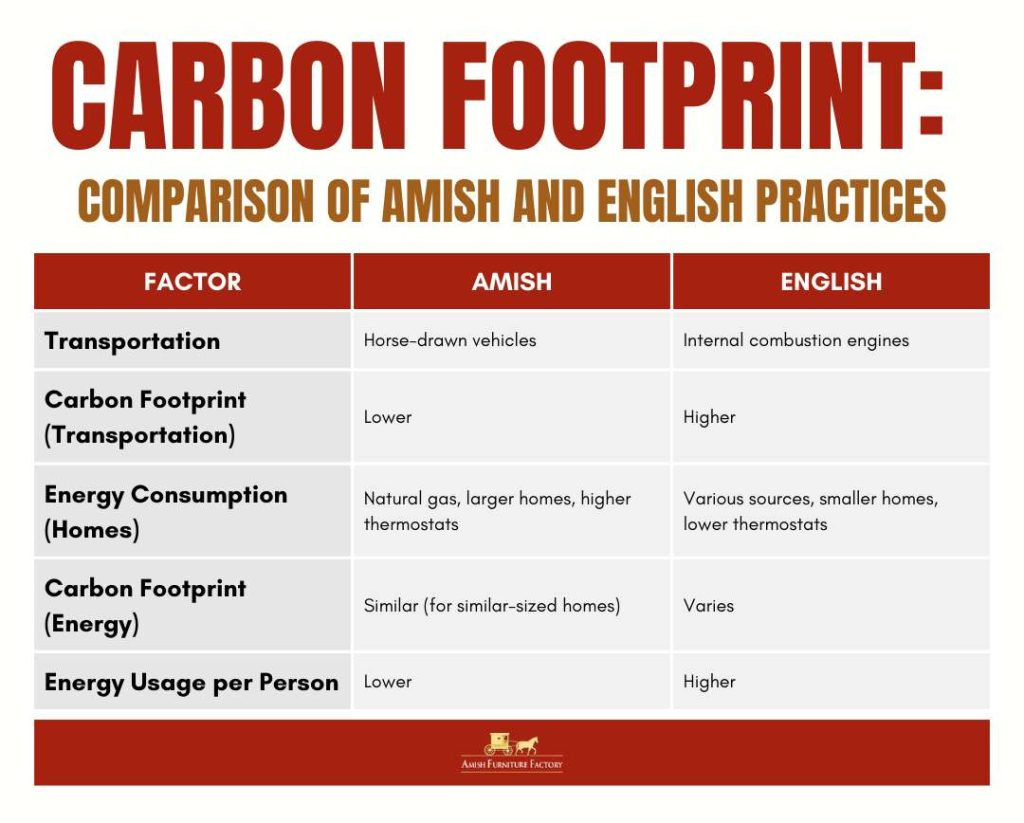Op/Ed: The Amish are More Advanced in Wind Energy than Americans
After trillions of public dollars invested into large scale wind projects, the proof is in the Amish and leadership in the area of sustainable practices and energy uses.
In an era dominated by advanced technologies and large-scale industrial solutions, the Amish community stands out as a beacon of simplicity and efficiency. Their unique approach to wind energy exemplifies this ethos.
While the world marvels at towering wind turbines requiring millions of dollars and extensive infrastructure, the Amish build functional windmills in a weekend with the help of their neighbors, providing power and water to their communities.
This essay explores how the Amish achieve this feat and contrasts it with the complexities of commercial wind energy.
The Amish Approach to Wind Energy
The Amish have long embraced renewable energy sources, including wind power, as a natural extension of their self-reliant lifestyle. They use windmills not to generate electricity for large grids but to fulfill essential needs such as pumping water, grinding grain, and running basic machinery. This practical, localized application ensures maximum utility with minimal waste.
Community Collaboration
One hallmark of Amish society is their collaborative spirit. When an Amish family decides to install a windmill, the project becomes a communal effort. Neighboring families come together to build the structure, pooling their skills and labor. In just a weekend, they can erect a fully functional windmill that serves the family’s needs.
The construction process is streamlined by:
Pre-fabrication of Parts: Many components, such as wooden blades and gears, are crafted in advance using traditional tools and techniques.
Division of Labor: Each person has a specific role, from carpentry to assembling the tower and blades.
Experience and Knowledge Sharing: Decades of accumulated wisdom in windmill construction are passed down, allowing for swift and efficient assembly.
This approach contrasts sharply with the months or years required to plan and build a commercial wind turbine.
Cost-Effectiveness
Amish windmills cost a fraction of their industrial counterparts. A typical Amish windmill might cost a few thousand dollars, largely for raw materials, while commercial wind turbines can cost millions.
This affordability arises from:
Using locally sourced materials.
Avoiding complex machinery and electrical systems.
Relying on manual labor instead of hiring contractors or using heavy equipment.
By focusing on practicality and sustainability, Amish windmills are an excellent example of cost-effective renewable energy.
Comparing Amish and Commercial Wind Energy
Construction Time and Labor
Building a commercial wind turbine is a highly complex process. It involves:
Extensive site selection and preparation, often requiring environmental impact studies.
Transporting massive components like blades and nacelles, which can span hundreds of feet.
Assembling the turbine using cranes and specialized equipment.
This process can take years, from planning to commissioning, and requires hundreds of workers. In contrast, the Amish’s smaller-scale, manually constructed windmills take mere days to assemble with a handful of people, highlighting the efficiency of their approach.
Environmental Impact
While commercial wind energy is touted as environmentally friendly, it is not without drawbacks. The manufacturing and transportation of turbines produce significant carbon emissions. Additionally, large wind farms can disrupt local ecosystems and pose risks to wildlife.
Amish windmills, on the other hand, have virtually no environmental footprint. Their small size and localized use ensure that they integrate seamlessly with their surroundings without causing harm to the environment.
Energy Input vs. Output
Commercial wind turbines are designed to feed electricity into the grid, requiring substantial energy inputs during their lifecycle. Manufacturing, installation, and maintenance contribute to the energy cost, often leading to debates about the net energy benefit.
Amish windmills are far more efficient in this regard. Their simple design and localized application mean they require minimal energy to construct and maintain. The energy they produce is used directly, with no losses from transmission or conversion.

Resilience and Sustainability
Another advantage of Amish windmills is their resilience. Unlike commercial wind turbines, which depend on a global supply chain for parts and maintenance, Amish windmills are designed for longevity and easy repair. Most repairs can be handled within the community, ensuring continuous operation without external dependencies.
This self-sufficiency aligns with the broader Amish philosophy of sustainability. By using renewable resources and avoiding reliance on external systems, they create a model for living in harmony with the environment.
Lessons for the Modern World
The Amish approach to wind energy offers valuable insights for a world grappling with the challenges of sustainable energy. Their emphasis on simplicity, community collaboration, and localized solutions highlights the potential of small-scale renewable energy projects. Key takeaways include:
Prioritize Functionality Over Scale: Smaller, decentralized systems can meet specific needs more efficiently than large, complex infrastructure.
Embrace Community Involvement: Leveraging local skills and labor reduces costs and fosters a sense of ownership.
Focus on Sustainability: By using natural materials and designing for durability, the Amish minimize waste and environmental impact.
Amish Energy Overview
Windmills, a traditional source of power, remain a common sight in Amish communities. Amish windmills harness the power of the wind to pump water, grind grain, and even generate electricity. Although less prevalent than solar power, windmills offer a reliable and sustainable energy solution, particularly in areas with consistent wind patterns. Windmills have been used by the Amish for centuries, reflecting their deep connection to traditional technologies.
The most prominent form of alternative energy adopted by the Amish is solar power. Photovoltaic panels, often discreetly installed on rooftops or barns, convert sunlight into electricity, providing a clean and renewable source of power. This technology has gained significant traction in recent years, enabling the Amish to operate appliances, lights, and even power tools without relying on the grid. According to The Times, approximately 50% of Amish households in Pennsylvania have installed solar panels.
While striving for self-sufficiency, the Amish also utilize generators for backup power or specific tasks requiring higher energy demands. These generators, typically powered by diesel or gasoline, provide a reliable source of electricity when other renewable sources are unavailable or insufficient.
In areas with access to flowing water, water wheels offer another sustainable energy option for the Amish. These structures harness the kinetic energy of water to power mills, sawmills, and other machinery. Water wheels represent a time-tested technology that aligns with the Amish value of resourcefulness.
Some Amish communities have embraced biodigesters, which convert organic waste into biogas, a renewable source of energy for heating and cooking. Additionally, the use of biofuels, derived from plant or animal matter, is gaining popularity as a cleaner alternative to fossil fuels for powering vehicles and machinery.
The Amish community’s embrace of alternative energy has a profound and positive impact on the environment.
Recent research by Dr. Marilyn Loveless has highlighted the significant environmental benefits of the Amish lifestyle. In a study comparing the carbon footprint of Amish residents in Holmes County, Ohio, to their “English” neighbors, she found that the Amish’s preference for horse-drawn buggies over internal combustion engines results in a dramatically lower carbon footprint in terms of transportation. In fact, the Amish produce approximately three times less carbon emissions from transportation compared to their English counterparts.
While commercial wind energy plays a vital role in addressing global energy needs, the Amish’s humble windmills remind us that bigger is not always better. Their efficient, cost-effective, and sustainable approach to wind energy demonstrates that innovation need not come at the expense of simplicity.
By looking to the Amish for inspiration, we can learn to balance progress with practicality, paving the way for a more sustainable future where old school intelligence overcomes political profiteering.
Article by Jason Spiess. Spiess has over 35 years of media experience from being the host to the publisher to an editor to the executive producer to having principal ownership in several media companies.
Spiess is currently the host of several newsmagazine radio podcasts that carry a 20-plus radio network, as well as worldwide through iHeart, Spotify and other podcast platforms. Spiess also operates a diverse professional social media audience with his media brands of over a combined 400K followers.
In addition to his newsmagazine radio podcasts, Spiess is a regular contributor to many industry publications and traditional news websites.
Spiess is a full-time father, cancer survivor, small regenerative/permaculture farmer, environmental steward, educator, speaker, author and graduate of North Dakota State University. Spiess also operates an off-the-grid office integrating sustainable solutions, including the best practices with an Industrial Forest and Digital Diversity.
Everyday your story is being told by someone. Who is telling your story? Who are you telling your story to?
Email your sustainable story ideas, professional press releases or podcast submissions to thecontentcreationstudios(AT)gmail(DOT)com.
CLICK HERE FOR SPECIAL PARAMOUNT + DISCOUNT LINK
Paramount+ offers its subscribers a plethora of quality content.
From classic films to banger TV shows like 1883 and Star Trek: Discovery, there’s no shortage of entertainment to explore.
How about some cult favorites like Red Dawn, Grease and There Will Be Blood?
Start Streaming Today!










It is applied at the proper place - the end user site. No secret there.
I love hearing about the Amish - especially the way they work together for projects like barn-raising and here, traditional windmills. Western ranchers have also used windmills to pump water into stock tanks in semi-arid cattle country.
I also love the way the Amish specialize in their skills and pass them down to the next generation, much like in ancient Israel. Jesus was a carpenter because his father Joseph was a carpenter.
When the full size replica of Noah's Ark was built in Kentucky, it became the largest timber frame structure in the world. Since timber framing is almost a lost art, Answers in Genesis sought advice from the Amish. They found 3 old timers who were experts. When those men heard about the project, they offered to help with the construction!
Some of the article, though, waters down the facts when the author says "While commercial wind energy is touted as environmentally friendly, it is not without drawbacks. The manufacturing and transportation of turbines produce significant carbon emissions. Additionally, large wind farms can disrupt local ecosystems and pose risks to wildlife."
Most of us know now that there are many more serious, in fact much more serious, "drawbacks" to wind and solar than the author implies.